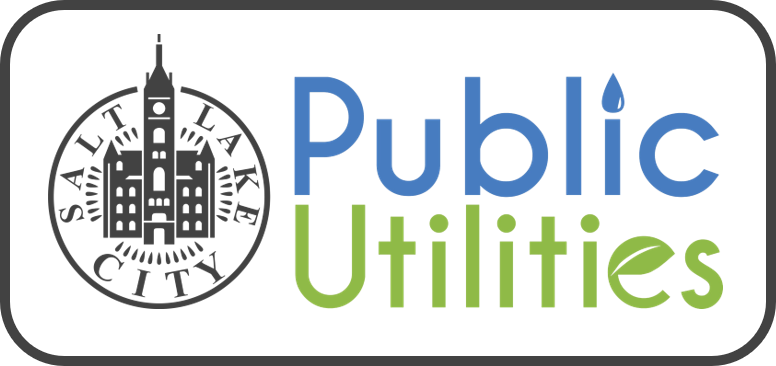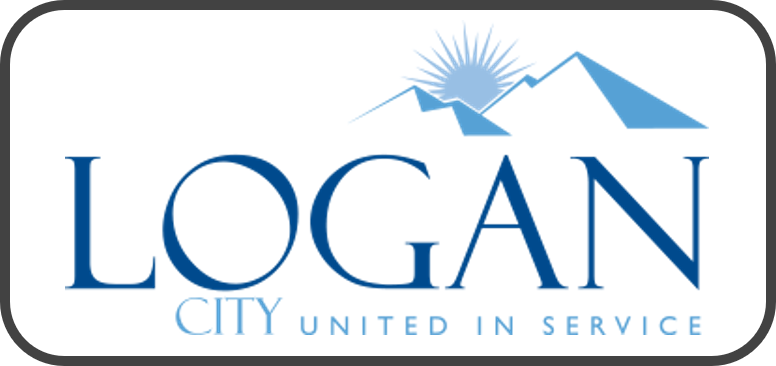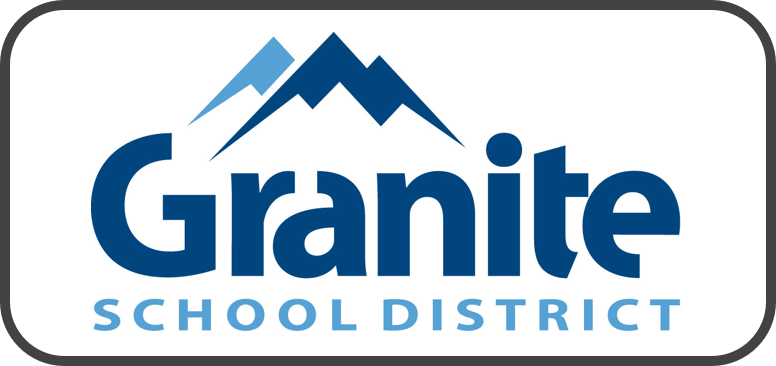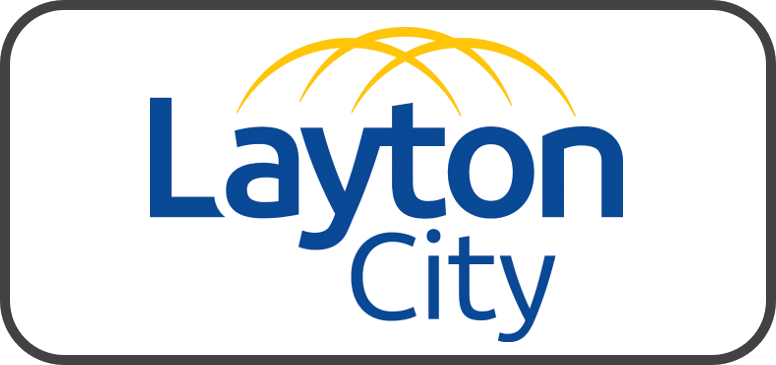Projects
The WaterMAPS™ program and team have partnered with several water suppliers for the purpose of supporting urban water demand management, conservation programming, and water planning and policy decisions.
The Salt Lake City Department of Public Utilities

The Salt Lake City Department of Public Utilities, which services residents of Salt Lake City and portions of several adjacent municipalities, has partnered with the WaterMAPS™ team on a multi-phased project. The primary objective of this project is to provide the Department and the Water Conservation Manager with a technical and science-based approach to analyzing the spatial and temporal patterns of landscape water use. WaterMAPS™ assessments have been conducted using water meter data from 2014 to present, high-resolution land cover data (derived from NAIP aerial imagery and LiDAR data), and localized reference evapotranspiration data. The reports and results from these assessments are being used to direct water conservation efforts to the locations with the greatest capacity to conserve water and to document the effectiveness of water conservation programs. As an element of the implementation process, a WaterMAPS™ manager viewing application has been developed to assist the Water Conservation Manager in identifying locations and prioritizing where water conservation may be realized and programming can be implemented. Work through this partnership is ongoing.
WaterMAPS™: The Story of WaterMAPS™(by Salt Lake City Department of Public Utilities)
Utah State Capitol Grounds Landscape Water Use Assessment
This report contains an analysis of landscape water use for the Utah State Capitol grounds. It is being provided in response to a legislative request for this information.
Center for Water-Efficient Landscaping Annual Reports
Eagle Mountain City

Eagle Mountain City, which is one of the fastest growing communities in Utah, partnered with the Center for Water-Efficient Landscaping and the WaterMAPS™ team on a multi-phased project to develop an improved understanding of residential water consumption. Several USU Extension programs and public outreach efforts were customized and implemented to assist Eagle Mountain City in developing water conservation programming, including WaterMAPS™, Water Checks, and Landscape Planning and Design.
The overarching purpose of the WaterMAPS™ partnership was to establish baseline water consumption data that could inform water conservation efforts in a newer and rapidly growing city. The tasks associated with these projects required the development of high-resolution land cover classification for the years of 2014, 2016, and 2018. These datasets, accompanied with water meter data and localized reference evapotranspiration data, supported WaterMAPS™ assessments for the eight years spanning from 2014 to 2021. An important element of the collective project was the installation of two new weather stations in Eagle Mountain City. The new weather stations, which are maintained as part of the Utah Climate Center network, filled critical data gaps and provided valuable weather data for the WaterMAPS™ analyses.
Center for Water-Efficient Landscaping Annual Reports
Landscape Water Use Analytics for Institutional and Corporate Properties
A large institutional partner with domestic and international properties partnered with the WaterMAPS™ team to develop a customized version of the software. This project pioneered an innovative approach to WaterMAPS™ because it required the analysis of many geographically dispersed locations. Additionally, the program was customized for use by professional institutional and corporate entities and water managers who can supply their own property, landscape, and water meter data with localized weather data supplied by WaterMAPS™. In this instance, WaterMAPS™ is facilitated through the use of a web-based interface that contains a user mapping tool which integrates geospatial data and provides details which can be organized and accessed by different levels of decision makers.
Weber Basin Water Conservancy District

With funding provided by the Bureau of Reclamation, the WaterMAPS™ team partnered with the Weber Basin Water Conservancy District to assist with the initial implementation of metering on secondary pressurized irrigation systems in 2011-2013. Using the WaterMAPS™ program, the estimated landscape water need was calculated for residential parcels located within the first three areas of the District where meters were installed. These calculations were then compared to the meter data to assess the efficiency of landscape water use. Secondary Water Use Reports containing this assessment and other conservation information were produced and mailed monthly to the residents during the irrigation season from April through October.
While the project focused on understanding and monitoring secondary water use, it also assessed the perceptions and behaviors of water users in terms of information sharing and technological change. Interviews and surveys focused on understanding how residents utilized the reports and the role the reports played in informing and reinforcing their water conservation efforts. The project demonstrated that the approach contributed to achieving improved secondary water use efficiency and accountability.
Since 2012, the District has continued to provide Secondary Water Use Reports to residents at locations where secondary water meters have been installed. This educational water conservation approach has been highly successful in reducing landscape water use in secondary pressurized systems. The success of this project has led to district-wide and state-level prioritization and funding for the installation of additional secondary meters.
Water User Dimensions of Meter Implementation on Secondary Pressurized Irrigation Systems
Secondary Water Use Reports: Information About How to Read Your Secondary Water Use Report
Throughout the irrigation season Weber Basin Water Conservancy District provides secondary water users, who have had a meter installed, a summary of their usage in the form of a Secondary Water Use Report.
Logan City

During the drought of the early 2000s, the WaterMAPS™ team partnered with Logan City to implement a city-sponsored, university-delivered residential landscape irrigation evaluation program. Researchers interviewed and worked with project participants to monitor landscape water use from 2002 through 2007. The study confirmed that water conservation on residential landscapes can be a challenging task because it requires a holistic understanding of environmental, biological, technical, and behavioral components. A key finding from the project was that water users need site specific and timely information to support their water conservation efforts.
During this project, WaterMAPS™ researchers refined the landscape water assessment approach. This refinement involved the development of a database that integrated water meter data, parcel data, weather data, and land cover classifications. This database facilitated a greater understanding of landscape water use because it supported the calculation of site-specific Landscape Irrigation Ratios. The improvements made to the WaterMAPS™ methodology during this project served as the foundation for the current WaterMAPS™ software program, which automates the process of identifying urban parcels with the greatest capacity to conserve water.
Tools for Evaluating and Monitoring Effectiveness of Urban Landscape Water Conservation Interventions and Programs
Residential Landscape Water Check Programs: Exploring a Conservation Tool
In response to drought and regional growth in the arid western United States, urban water demand management is increasingly important.
Granite School District

The WaterMAPS™ team partnered with the Granite School District on a three-year project to analyze landscape water use in an institutional setting. The project involved working closely with custodians of the School District to gather data on watering behaviors and the challenges associated with managing landscape irrigation at different schools. Two types of irrigation systems (i.e., manual and automated) and four different types of conservation interventions were assessed. Landscape water use was monitored to compare changes among interventions and irrigation systems to measured plant water needs and historical use. Results revealed that the effectiveness of conservation interventions depended on the contexts in which they were applied. Overwatering tended to occur at schools with automated irrigation systems, smaller school grounds, high water pressure, and nine-month school calendars. Interventions were more effective when they led to situational problem solving that integrated the generalized scientific and technical knowledge of the university researchers with the experiential knowledge of the school custodians in charge of watering.
Implementing Landscape Water Conservation in Public School Institutional Settings: A Case for Situational Problem Solving
Implementing Water Conservation in an Institutional Setting
Landscape water use at public schools was assessed and monitored to better understand landscape water conservation in an institutional setting.
Layton City

With funding from a USDA CSREES National Research Initiative Grant, the WaterMAPS™ team partnered with Layton City to evaluate the landscape water use of households and businesses in an urban community within Utah's Wasatch Front metropolitan area. This project was the earliest effort of the WaterMAPS™ team to incorporate analytic techniques in the assessment of urban landscape water use.
To analyze residential and business landscape water use patterns, this project integrated airborne multispectral digital imagery, parcel data, water billing data, weather information, and interview and survey data. A threshold approach, which later evolved into the Landscape Irrigation Ratio (LIR) concept, was implemented to characterize water use. This approach evaluated the depth of irrigation water, which was derived from water meter readings, and landscape water demand, which was derived from estimated environmental and biological water needs of landscape plant types. These calculations were used to establish upper and lower thresholds of landscape water use.
This study investigated both households and businesses, with the aim of explaining factors that accounted for variations in landscape water use patterns. Project findings indicated that the type of irrigation system (i.e., different levels of automation) and the type of property (i.e., residential versus commercial) were the two primary factors that explain variations in landscape water use. Wasteful watering occurred more frequently at locations with programmed sprinkler systems (versus locations watered by hose or manual start sprinkler systems) and at businesses (versus residential locations). The research also revealed the nature of various constraints to efficiency at particular locations. The research team recommended approaches to identify wasteful watering locations and to implement conservation programs that could help people assess efficiency constraints and learn ways to conserve.
Situational Waste in Landscape Watering: Residential and Business Water Use in an Urban Utah Community
Partners
Funding for WaterMAPS™ has been provided by:
Utah State University:
- Center for Water-Efficient Landscaping
- Utah State University Extension Water Initiative
- Utah Agricultural Experiment Station[BROKEN LINK]
- Utah Water Research Laboratory
External Partners:
- Salt Lake City Department of Public Utilities
- Eagle Mountain City
- An institutional/corporate partner
- Weber Basin Water Conservancy District
- United States Bureau of Reclamation
- USDA Cooperative State Research, Education, and Extension Service
- Western Water Assessment
Utah State University Affiliations:
- Center for Water-Efficient Landscaping
- Utah State University Extension
- Remote Sensing/GIS Laboratory
- Department of Environment and Society (QCNR)[BROKEN LINK]
- Department of Plants, Soils and Climate (CAAS)[BROKEN LINK]
- Department of Wildland Resources (QCNR)[BROKEN LINK]
- Utah Agricultural Experiment Station[BROKEN LINK]
- Utah Water Research Laboratory

